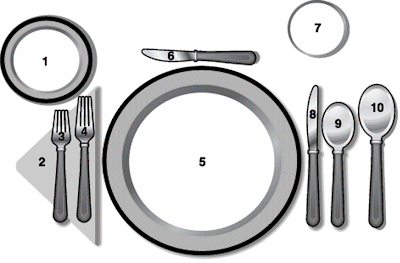Many parents attest to the fact that early infancy is the stage of their child's life that they dislike the most. After all, with 2 a.m. feedings, diaper duty around the clock and the inability to understand the needs of their infant, it's easy to see how these challenging few months can be troublesome. However, the real "fun stuff" may be yet to come.
Enter the mobility months and the toddler years. At this point in a child's developmental state he is learning to move and communicate on his own. This involves exploring the world around him, first and foremost his home environment. When baby starts getting into just about everything in the house - even those items deemed off limits - you may wish for the days where your little sweetheart stayed put.
At this age your child is also most prone to accidents - with choking, falls and suffocation among the top causes. In fact, according to a study conducted by the Home Safety Council, children under age one have the highest rates of unintentional home-injury death of all children under 15. That is why babyproofing the home is essential and should be at the top of your list of priorities, even before your little one starts crawling or walking.
GETTING STARTED
It is impossible to predict just what trouble your child will get into when he becomes mobile. However, there are general guidelines you can follow to ensure overall safety.
To begin, view your home from a child's level, meaning get down on hands and knees and see what items may be of interest to an inquisitive young mind. Also see what items are in easy reach. Among your first discoveries may be electrical outlets and power cords, plants, and any knickknacks that you keep on coffee or end tables.
Go from room to room and make an inventory of potential hazards. Don't worry, once you head to the store with list in hand, you'll find a bevy of safety products that will remedy most hazards on your list.
KITCHEN
If there is one room in the home that has the largest number of potential hazards for a child, it is the kitchen. Plus, this is a room in which your attention is often divided between cooking, cleaning and watching your baby.
There are many steps you should take to ensure the space is safe. First, purchase cabinet locks to keep little fingers out of cabinets. These come in a variety of styles, so experiment with the type of lock that is most comfortable and safe. Move all cleaning products and suffocation hazards like trash and sandwich bags to a higher cabinet. Remember, locks aren't foolproof and a determined toddler may be able to figure out a lock.
Purchase stove guards and refrigerator locks so that these doors cannot be opened. There are also guards that prevent a toddler from reaching up and turning stove knobs. When cooking, use the back burners so that hot pots and pans cannot be pulled off of the stove.
Keep pet food bowls off of the floor when your child is given free reign of the kitchen. Pet food presents a choking hazard and may also contain meat that has not been screened for mad cow disease. It only takes a few inches of water to drown a child, so remove the water bowl as well.
LIVING ROOM
The greatest dangers in this room are unprotected outlets, sharp-edged furniture and heavy electronics.
Secure televisions, entertainment centers and bookcases with safety hooks to prevent them from toppling onto a child who is using these items to pull to a standing position.
Put outlet safety plugs in all outlets and place cushioned corner guards around tables, hearths and any other sharp edges. Use baby "corrals" and gates to block off the head and the foot of staircases and any other areas that are off limits.
NURSERY
Your child will spend a lot of time in the crib - moments when you are not likely to be in the nursery. If your child can pull to a standing position, make sure the crib mattress is in the lowest position so that he cannot climb out of the crib. Also, remove any toys that can be used to step up and out of the crib or mobiles that can be pulled off and become a hazard.
Consider window treatments without cords, such as vertical blinds or curtains in lieu of mini-blinds. Or, use cord containers that keep the cords wrapped up so they don't pose a strangulation danger.
If you are placing a toy chest in the room, use one that has an open top or has a gap between the lid and the top of the chest so that fingers cannot be caught. Also, place door stoppers atop doors to prevent pinched fingers as well.
GENERAL GUIDELINES
You'll need to modify your childproofing methods as your child grows older. Here are some other tips to consider:
·Vacuum regularly to pick up any loose change, paper clips or other items on the floor that your child can find and choke on.
·Remove the rubber tips of door stoppers because they can be a choking danger.
·Keep bathrooms off limits if possible. There are just too many potentially dangerous items in there. Use a toilet cover lock to prevent drowning in the toilet.
·Don't leave your child alone in a room, even with the best safety methods employed. And NEVER leave him unattended in the bath.




